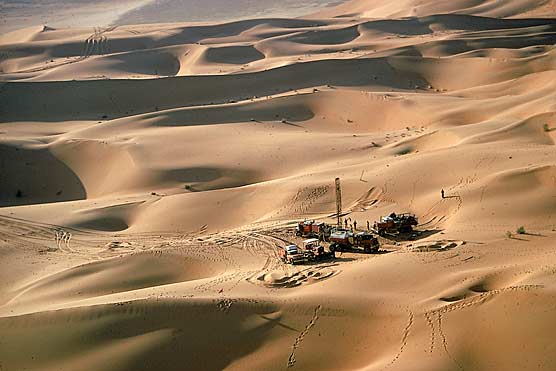The oil and gas industry is frequently characterized as “Big Oil.” In fact, small businesses typically employing 10 full-time and 3 part-time employees drill 85 percent of the United States’ wells, produce 65 percent of the natural gas, and nearly 40 percent of the oil consumed by Americans.
Meanwhile, 97% of federal lands on the OCS and 94% of federal lands onshore are not leased for oil production.1 The hoarding of federal land leases stifles American oil production.
So who benefits from Congressional stockpiling oil leases?
REALLY BIG OIL
Most of the oil we import comes from massive, nationally owned companies. The nationally owned Saudi Arabian Oil Company, for example, has over 30 times the amount of worldwide liquids reserves than ExxonMobil. When we are restricted from producing oil domestically, we send trillions of American dollars overseas into the coffers of unfriendly nations.
Here are the top 10 oil producing companies in the world:

Courtesy Encarta
- National Iranian Oil Company
- Saudi Arabian Oil Company
- Iraq National Oil Company
- Qatar General Petroleum Corporation
- Abu Dhabi National Oil Company (UAE)
- Kuwait Petroleum Corporation
- Petroleos de Venezuela.S.A.
- Nigerian National Petroleum Corporation
- National Oil Company (Libya)
- Sonatrach (Algeria)
Below is a chart showing how much we send to nation-owned, really big oil companies:
Sources:
1 See Bureau of Ocean Energy Management, Regulation and Enforcement, Offshore Energy and Minerals Management, http://www.boemre.gov/offshore/. According to the administration’s website, the outer continental shelf is 1.76 billion acres (http://www.boemre.gov/ld/PDFs/GreenBook-LeasingDocument.pdf page 1) and only 38 million acres are leased (Department of Interior, Oil and Gas Lease Utilization – Onshore and Offshore, http://www.doi.gov/news/pressreleases/loader.cfm?csModule=security/getfile&pageid=239255 page 4). That is a mere 2.5% of the entire outer continental shelf. According to the Department of Interior, 38 million acres of onshore lands are leased for oil and natural gas production. See Table 3 in Department of Interior, Oil and Gas Lease Utilization – Onshore and Offshore, http://www.doi.gov/news/pressreleases/loader.cfm?csModule=security/getfile&pageid=239255 According to the Congressional Research Service, the federal government owns just over 650 million acres of land. See Appendix A. Congressional Research Service, Major Federal Land Management Agencies: Management of Our Nation’s Lands and Resources, May 15, 1995, http://www.ncseonline.org/nle/crsreports/natural/nrgen-3.cfm. The federal government also control an additional 58 million acres of federal mineral estate below privately owned surface estate. See Bureau of Land Management, Split Estate, http://www.blm.gov/pgdata/etc/medialib/blm/wo/MINERALS__REALTY__AND_RESOURCE_PROTECTION_/bmps.Par.98100.File.dat/SplitEstate08finalWeb.pdf.
Environmental Benefits of Advanced Oil and Gas Exploration and Production Technology, U.S. Department of Energy Office of Fossil Energy, October 1999.
Leading Oil and Gas Companies Around the World, PetroStrategies, Inc., http://www.petrostrategies.org/Links/Worlds_Largest_Oil_and_Gas_Companies_Sites.htm, July 16, 2008.
U.S. Imports by Country of Origin, Energy Information Administration, http://tonto.eia.doe.gov/dnav/pet/pet_move_impcus_a2_nus_ep00_im0_mbbl_a.htm, July 16, 2008.